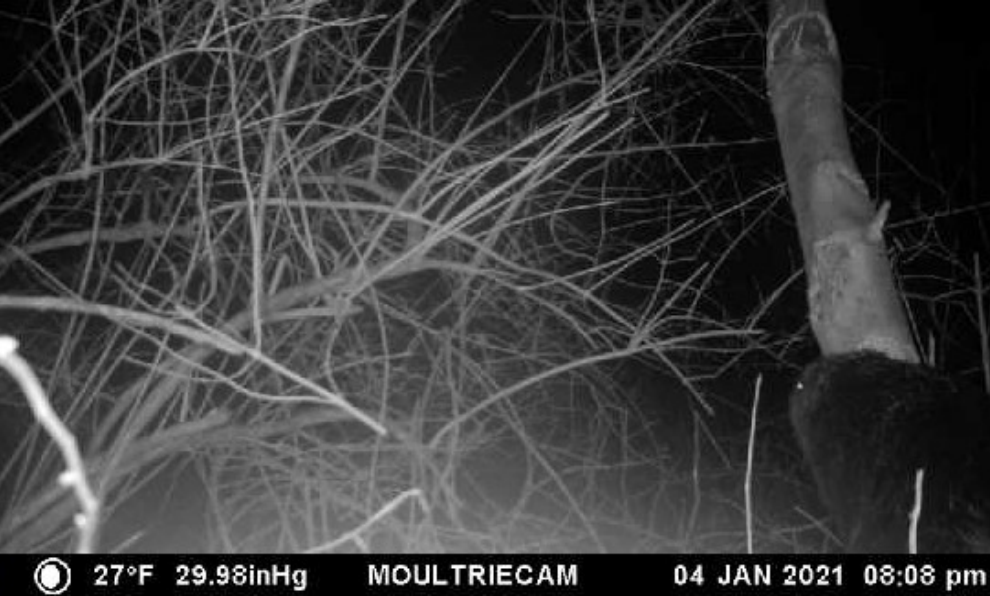|
by Kathy Beaty, Goodwin Master Naturalist Intern, Level 1 Just after Thanksgiving, 2020, I reached out to the Great Meadows Conservation Trust in Wethersfield to seek permission to install my Critter Cam on their property. I am conducting an 8-month study observing and reporting wildlife for my Master Naturalist Certification research project. Jim Woodworth, Stewardship Chairman of the GMCT, quickly expressed interest in my project and offered to meet me at the Wood Parcel in Wethersfield, where there were telltale signs of recent beaver activity on surrounding trees. We met and walked the beautiful, forested trail near Beaver Brook (appropriately named) to an area clearly enjoyed by American beaver. There were numerous young aspen saplings cut and we were pretty optimistic that the installation of the Critter Cam would catch nighttime beaver activity. Beavers have thick dark brown fur and a stocky muscular body. Their hind feet are webbed for swimming and have a flat, hairless tail that about 12 – 16” long. A beaver can weigh between 30 and 65 lbs., and have brownish orange, sharp, prominent incisors that make quick work on any young saplings. Beavers are most active at dawn or dusk and they are much more active late fall preparing for winter, feeding on inner bark, twigs, leaves, and roots to build up extra fat to survive the cold months. They will also store a winter food pile of branches and sticks piled near their lodge so it can be accessed underwater. That afternoon, I positioned my Critter Cam in the spot where it was likely the beaver would return. Here's what happened. (Beaver in Wood Parcel, Great Meadow Conservation Trust, Wethersfield CT) In the span of 7 minutes, this hungry beaver gnawed off the Aspen sapling and started to move it to its lodge, somewhere by Beaver Brook, although Jim and I couldn’t find it. Beaver are semi-aquatic and live-in rivers, streams, ponds, and lakes so we knew it was just a matter of time before we found it. I left the camera on that site for several days and witnessed similar activity in the evening as it chewed and moved trees away, but still did not see the lodge. Then, in early January, Jim told me he thought he found it on the other side of the Wood Parcel approximately 125 yards away from the initial site. It was much harder to access and was near a wider area of the Beaver Brook near the road of Maple St, Wethersfield. We met again and gingerly navigated through the rough terrain where there was considerable activity and I once again positioned the camera on a tree anxious to discover what we’d see. (L) lower right of photo, beaver activity (R) lower right, tree completely cut by beaver This beaver took down a much larger tree in the brook in 10 minutes, and I was concerned that the next tree could be the one I installed with the Critter Cam. I knew I had to get down to Wood Parcel to retrieve my camera. Here’s what I found in the early morning:. I was able to get this footage just before it took its dive under the water. Beaver swimming in Beaver Brook by its lodge, Wethersfield CT So, there you have it; a fun little nature adventure visiting the habitat of the American beaver. They mate in late January to March, and produce a litter in May or early June. Who knows, maybe we can catch a glimpse of the beaver kits in the Spring.
|
Archives |








 RSS Feed
RSS Feed